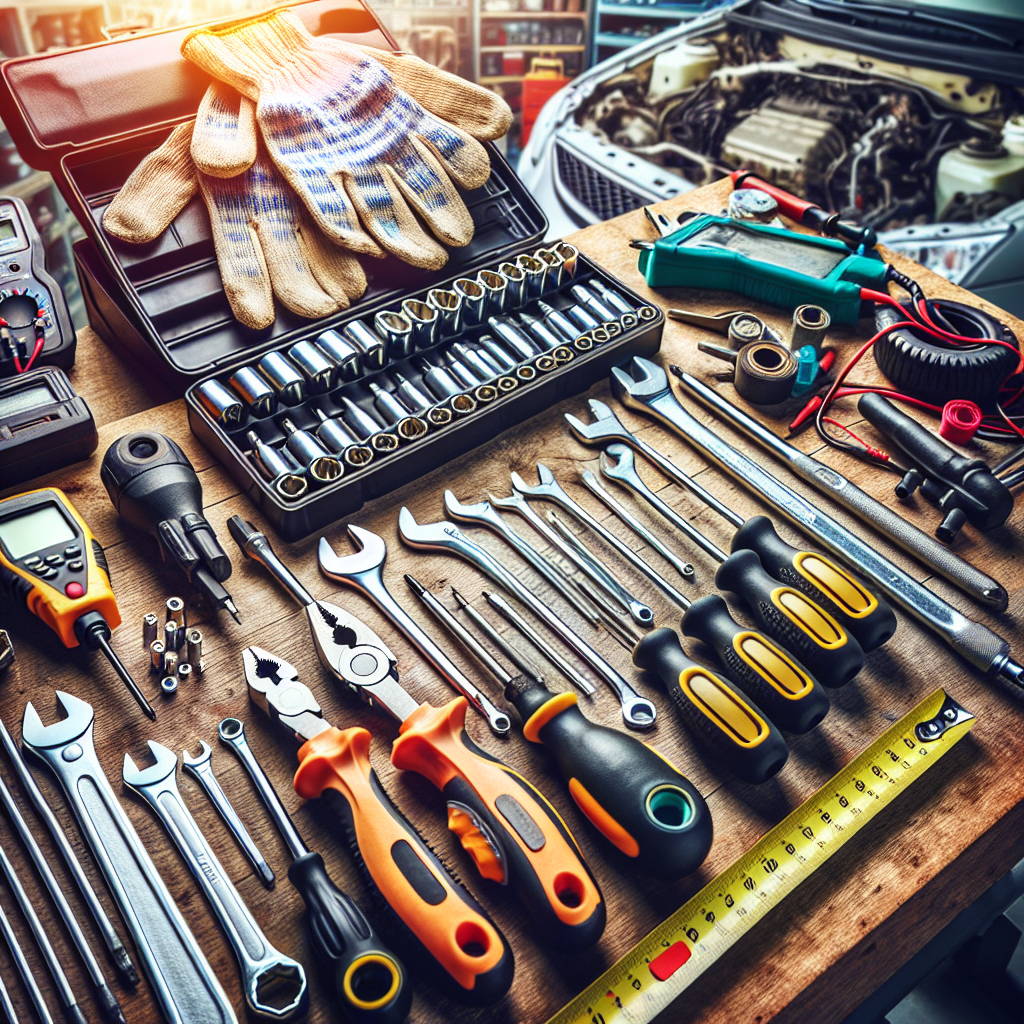
Getting started with DIY car repairs can be daunting, but having the right tools can make all the difference. Whether you're changing the oil, replacing brake pads, or swapping out a battery, here's a rundown of essential tools to help you get the job done efficiently and safely.
Essential Tools for Beginners
Screwdrivers
Use: Versatile tools for removing interior panels and tightening or loosening screws in various car parts.
Tip: Invest in a set with both flathead and Phillips-head screwdrivers in multiple sizes for maximum utility.
Socket Set
Use: Essential for turning nuts and bolts, required for many car repairs and maintenance tasks.
Tip: Look for a set with both standard (SAE) and metric sizes to cover all bases.
Jack and Jack Stands
Use: Safely lift and hold your car in place, allowing you to work underneath for tasks like changing oil and replacing brake pads.
Tip: Always use jack stands in conjunction with a jack for added safety.
Pliers
Use: Helpful for gripping, bending, and cutting tasks, such as removing and installing hose clamps or electrical connectors.
Tip: A set that includes needle-nose, slip-joint, and locking pliers will cover most needs.
Additional Tools for Specific Repairs
Oil Change
- Oil Filter Wrench: Designed to remove and install oil filters easily.
- Funnel: Essential for pouring new oil without spills.
- Shop Towels & Gloves: Keep your hands and workspace clean.
Brake Pad Replacement
- Lug Wrench: For removing and installing lug nuts.
- Brake Tool Kit: Includes tools like a brake spring tool and brake caliper tool for a safe and efficient brake pad replacement.
- Jack and Jack Stands: Ensure your car is securely lifted and held in place.
Battery Replacement
- Battery Terminal Cleaner: Cleans and maintains battery terminals for better electrical connections.
- Battery Load Tester: Allows you to test the condition of your car battery.
- Basic Socket and Wrench Set: Essential for loosening and tightening battery terminals.
General DIY Tips for Beginners
- Always refer to your car's manual: Follow the manufacturer's recommendations for all repairs and maintenance.
- Safety first: Wear protective gear like gloves and safety glasses, and always use jack stands when working under your car.
- Start simple: Begin with straightforward tasks like changing the oil or replacing wiper blades to build confidence.
- Organize tools and parts: Ensure you have everything you need before starting any repair to avoid frustration and lost items.
- Take your time: Don't rush the repair process—it's better to be thorough and correct.
- Seek advice: If unsure about a repair, consult experienced DIYers, local auto parts stores, or professional mechanics.
- Keep a maintenance record: Track the repairs and maintenance you perform for future reference.
Common Mistakes and Warnings
- Never work on a car supported only by a jack: Always use jack stands.
- Don't attempt repairs you're unsure about: Seek professional advice or help.
- Use tools correctly: Improper tool use can cause damage or injury.
- Follow safety precautions: Always wear gloves and safety glasses.
- Ensure the car is off and in park: Confirm the car is not running and is properly secured before starting any repair.
- Use the right parts: Wrong or low-quality parts can compromise safety and performance.
- Disconnect the battery for electrical work: Avoid shocks and damage to vehicle systems.
- Recycle used oil properly: Never pour used oil down the drain; recycle it at designated centers.
- Don't rush: Mistakes can be costly; take your time and be methodical.
Tool Maintenance Tips
- Clean and dry tools regularly: Prevent rust and corrosion by cleaning and drying your tools after use.
- Store tools properly: Keep them in a dry environment, ideally in a toolbox or organized on a pegboard.
- Inspect tools regularly: Check for damage or wear and replace as necessary.
- Follow manufacturer's instructions: Pay attention to specific maintenance and storage guidelines for each tool.
FAQs
Q1. Can I perform car repairs without experience?
A1. Yes, start with simple tasks like oil changes and battery replacements to build your confidence and skills. Always consult your car manual and seek advice when needed.
Q2. How often should I check my car’s tire pressure?
A2. It's recommended to check your tire pressure at least once a month and before long trips. Proper tire pressure ensures safety and extends tire lifespan.
Q3. What should I do if I encounter a problem during a DIY repair?
A3. If you run into an issue, stop and reassess. Consult your car's manual, seek advice from experienced DIYers, or contact a professional mechanic for guidance.
Q4. How can I learn more about car repairs?
A4. There are numerous online resources, video tutorials, and forums dedicated to DIY car repairs. Additionally, many local auto parts stores offer classes and advice.
Q5. Is it necessary to keep a record of my car repairs?
A5. Yes, maintaining a record of your repairs and maintenance can help track your car’s history and is valuable for future troubleshooting and resale value.
By equipping yourself with the right tools and knowledge, you can confidently tackle basic car repairs and maintenance, ensuring your vehicle stays in top shape while saving money and gaining valuable skills. Happy repairing!

